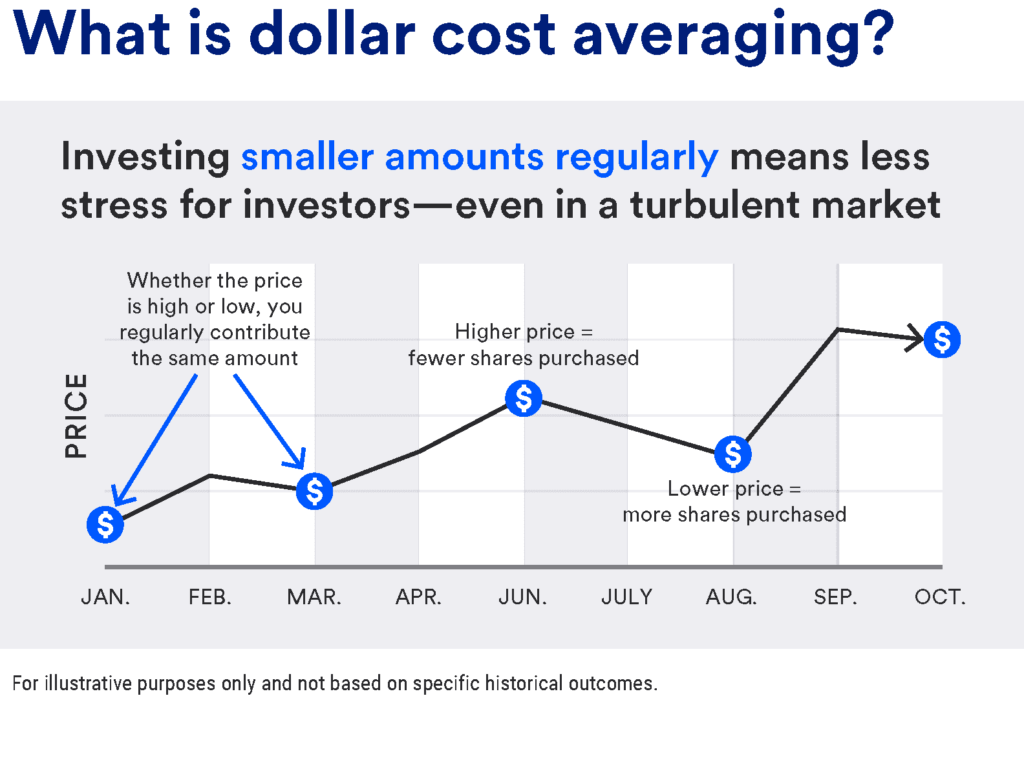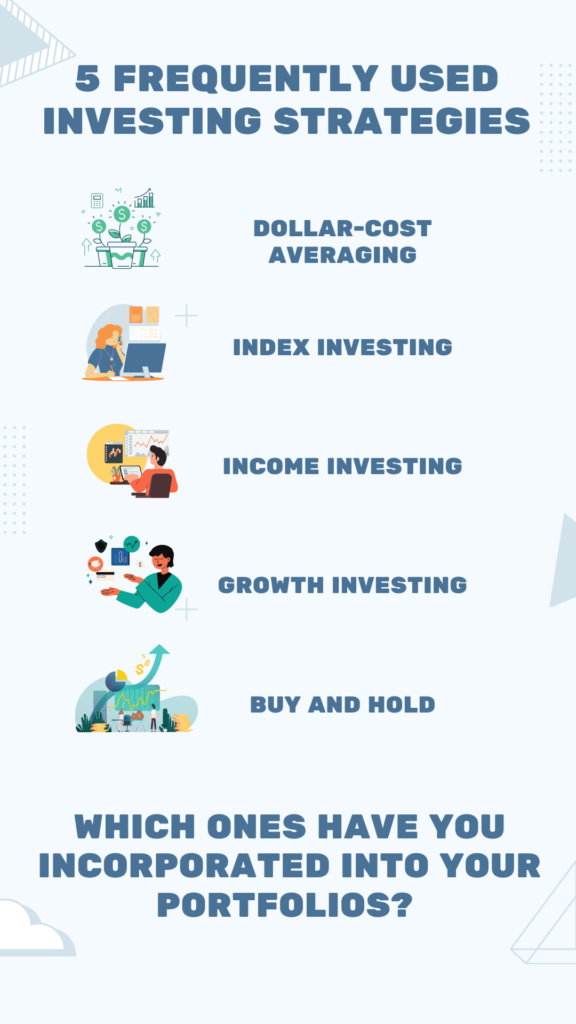Investing can be risky, but there are ways to minimize those risks. With a well-defined investment strategy, you can confidently make choices that align with your financial objectives. Here, we cover various strategies that will assist you in managing your investments effectively. Don’t let fear hold you back from investing – Investing is the best way to grow your money.
An investment strategy aims to maximize your return while minimizing your risk.
I was also very concerned about losing my hard-earned money when investing. Let’s be honest, it is very hard to earn money, so we have to be wise about how we invest it. However, I went over my financial goals, and based on that, I picked the best strategies for my portfolios. I will share that with you later in the post, but first, let’s discuss the five most used investment strategies.
1. Dollar-Cost Averaging
Dollar-cost averaging requires regular investments. In other words, you determine how much money you want to invest and how often. Then, you invest the same amount simultaneously regardless of how the market is doing. When and how much to invest solely depends on your goals and budget.
Dollar-cost averaging has the great advantage of removing the anxiety of market timing. Instead of constantly monitoring the stock market, you regularly invest regardless of share prices.
When prices are high, your investment may buy you fewer shares for a month. However, when prices fall, it can get you more shares. This approach can eventually balance out your average purchase price, improve your investment portfolio and make you a more disciplined investor.

2. Index Investing
Index investing involves investing in index funds that aim to replicate the performance of a benchmark index such as the S&P 500. These funds hold a diverse range of securities, which helps to minimize investment risks while diversifying your portfolio. Experts highly recommend this as one of the best ways for average investors like us to invest.
You can invest in an indexed mutual fund or ETF (exchange-traded fund) specializing in a specific sector, industry, or type of company. You can also choose index funds that focus on the entire market. Index ETFs and mutual funds have a clear advantage over actively managed funds in generating fewer taxable capital gains.
3. Income Investing
This is an excellent strategy for those who want to retire early or are close to retirement. Income investing is a strategy that focuses on producing passive income from your investments. There are various ways to generate income, such as through dividends and bond yields. Also, you could generate capital gains if the investment increase in value.
Here are a few assets that you can use to earn income through investing:
| Dividend stocks | Dividend ETFs | REIT (real estate investment trusts) | Money Market Accounts | Bonds |
4. Growth Investing
A growth investor’s primary goal is to increase their profits rapidly. Their strategy involves investing in emerging companies that are expected to experience growth.
These are promising companies that are experiencing faster-than-average revenue growth. These companies are known for offering unique and groundbreaking products and services that are difficult for competitors to replicate. The technology sector is an excellent option for those interested in investing in growth.
It’s important to understand that investing in emerging companies typically costs more than other stocks and involves higher risk. However, some investors believe the growth potential outweighs the risks.
5. Buy and Hold
The buy-and-hold strategy is a proven investment principle. It’s simple, buy an investment and hold onto it for an extended time.
To succeed with this method, selecting investments expected to perform well for a prolonged period is crucial. Therefore, conducting thorough research and evaluating the long-term growth potential of any stock or security being considered for investment is crucial. If you aren’t an expert, index funds and ETFs may be a good option for this strategy.
With this strategy, you must hold the investments even when the market drop. It can be challenging, but it’s important to retain your stocks despite any temporary changes in the market if you want this approach to be effective. The buy-and-hold strategy is ideal for less active investors who prefer a “set it and forget it” method.
My investing strategies
These five investing strategies are the ones I use for my portfolios. They help me reduce risk, and each serves a purpose. For example, I use the buy-and-hold strategy for my retirement portfolios; Roth IRA and 401K. This strategy is perfect because I will not touch these portfolios for several years.
I use the dollar-cost averaging strategy to invest in all my portfolios. My primary focus is on Index funds and ETFs. I maintain balance in my portfolios by purchasing ETFs and Index funds from diverse market caps and sectors. These strategies have proven highly successful, and I intend to continue using them for my future investments.
For my taxable portfolio, I prefer to utilize income investing as it aligns with my goal of early retirement. Therefore, I buy index funds and ETFs that pay dividends.
It is essential to define your goals before selecting strategies. A clear goal provides direction and helps achieve the desired outcome. Though investing may seem complex, it is not. Thanks to the creation of index funds and ETFs, we can invest like professionals with some effort. Please share your investment strategies and the reasoning behind choosing them.





